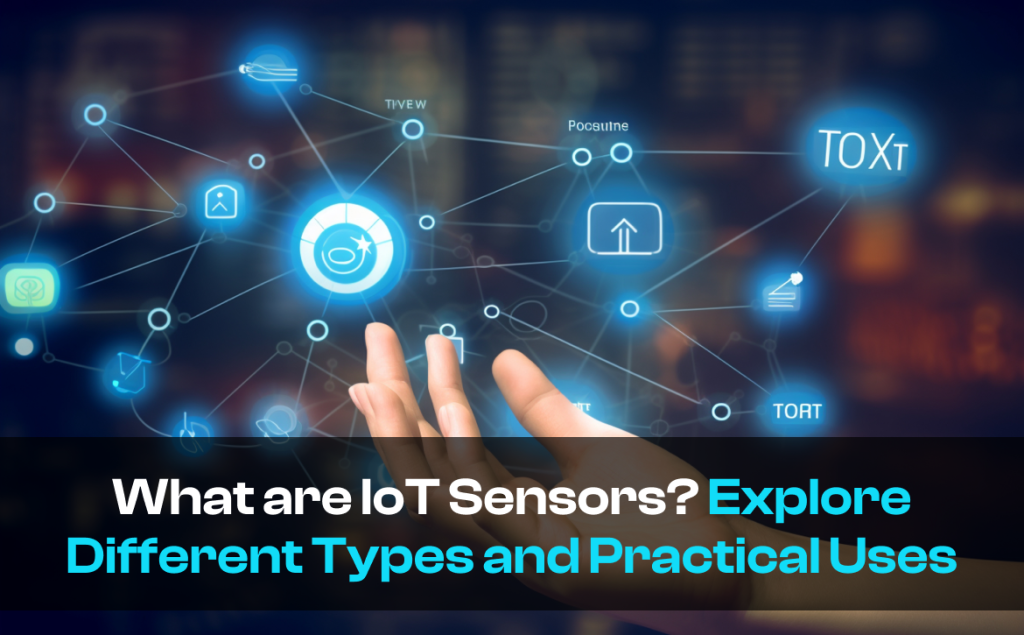Have you ever wondered how your smartphone can count your steps or how a smartwatch can read your heart rate and blood pressure with such precision?
Well, the reason behind it is nothing but a chip or device that’s embedded into their system or machinery.
Better known as sensors, these little components or devices are designed to detect, measure, record, indicate, or respond to a physical property like a movement or a situation.
When combined or connected to the Internet, these sensors and actuators become Internet-enabled and hence, are called the Internet of Things (IoT) Sensors.
The primary role of the IoT sensors is to gather data from the users or the surrounding environment and send it across the server for the desired action.
As the main touchpoint for end users, all IoT sensors are meant to work with the utmost efficiency when they are connected to the internet, whether directly or indirectly. Nonetheless, different types of appliances and devices may also have different types of sensors in them.
Types of IoT Sensors and Their Applications
While there are several types of IoT Sensors in the growing digital landscape, some of the rather common include:
1. Temperature/Thermal Sensors
Temperature or Thermal Sensors are one of the most common types of IoT sensors that you can find.
They are used to measure the temperature or heat levels of an object or area.
Available in both contact and non-contact types, thermal sensors can sense, collect, and transfer data over the Internet and initiate a response based on the instructions or algorithms.
Used across various industries such as agriculture, manufacturing, healthcare, and so on, temperature sensors can also help you automate the temperature of rooms, heavy-duty machines, and home appliances.
Some of the common examples of these sensors include thermostats, thermistors, thermocouples, and resistor temperature detectors (RTD).
2. Motion Detectors
Motion Sensors are yet another common type of IoT sensor that you may have seen in real life. For example, the glass door of an office or mall opens on its own as soon as you get close to it. The reason is the presence of a motion sensor on the ground, which sends a signal to the door to open or close upon detecting any movement.
Used primarily for security reasons, motion detectors can also be applied to various systems such as elevator doors, alarms, energy monitors, video surveillance, smartwatches, fitness trackers, etc.
Motion detectors use the technology of passive infrared rays, ultrasonic waves, and microwaves to sense and react.
3. Pressure Sensors
Next up, we have the pressure sensors that are used or designed to detect the pressure levels of a device or area and send information to the control center when any changes in the pressure are detected.
Mainly used to identify leaks and the flow of gases or fluid, pressure sensors have shown immense potential in a number of fields like the automotive and aircraft industry, hydraulic and pneumatic systems, and extraction and drilling.
A few common examples include the tire pressure monitoring system (TPMS) and the digital pressure sensing device BMP180 which is used for GPS and navigation.
4. Humidity Sensors
Humidity sensors or hygrometers can measure the vapor content or moisture of both air and soil.
Commonly found in heating, cooling, ventilating, and HVAC systems, humidity sensors can be employed in residential and industrial spaces or when the humidity levels of an object or area need to be maintained or controlled.
Apart from HVAC systems, humidity sensors are largely utilized in the food and agriculture industry to maintain ideal humidity levels and prevent any contamination or decomposition.
Modern IoT-enabled humidity sensors can also help you remote control or automate the functionality of a device as the moisture level may increase or decrease several times during a day.
5. Proximity Sensors
Proximity sensors are widely used in our day-to-day life whether we know it or not.
Designed to sense the proximity, or the presence/absence of objects in the desired vicinity, distance, or space, proximity sensors can detect things without even touching or coming into direct contact with them.
As such, they are heavily used in parking vehicles, navigating, monitoring, counting stuff, and determining the available space.
There are many types of proximity sensors depending on the technology they use such as photoelectric, magnetic, capacitive, inductive, and ultrasonic.
Regardless, proximity sensors are commonly used in the retail, industrial, and consumer sectors such as parking lots and elevators.
6. Accelerometers
Accelerometer sensors are instruments that measure the linear acceleration or the velocity of a moving object or body concerning the earth’s surface or gravity.
Popularized by the mighty Apple, it is how your phone screen activates or turns on on its own when you lift the phone or turn the screen up.
Able to sense and react based on several movements such as a tap, tilt, shake, and positioning or orientation of the device, accelerometers are widely used in cell phones, smart watches, GPS systems, and security or anti-theft protocols.
Some of the common types of accelerometer sensors are capacitive, inductive, strain, piezoelectric, and Micro Electro Mechanical Systems (MEMS).
7. Level Sensors
Level sensors are used to measure or monitor the levels of various substances including solid, gaseous, or liquid. For example, the car’s gas gauge, which triggers the warning light when the fuel is running out or drops to its minimum level.
In general, though, they are better referred to as liquid-level sensors.
Regardless, they can also be used to detect the level of gases, powders, and granular materials.
As such, they are being widely used in water treatment plants, the food sector, oil and petroleum refineries, and waste management.



